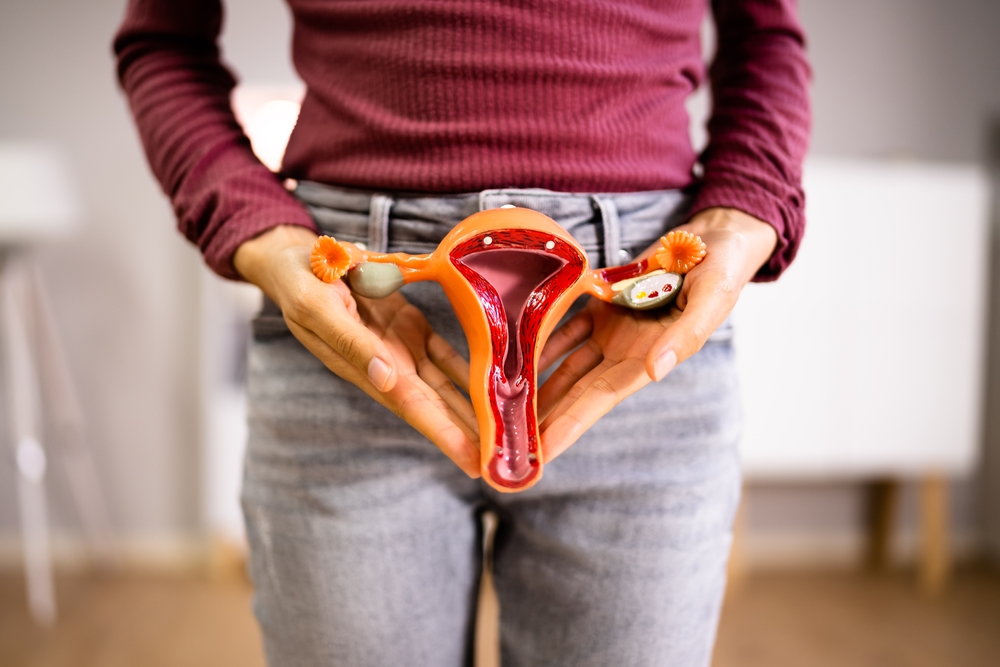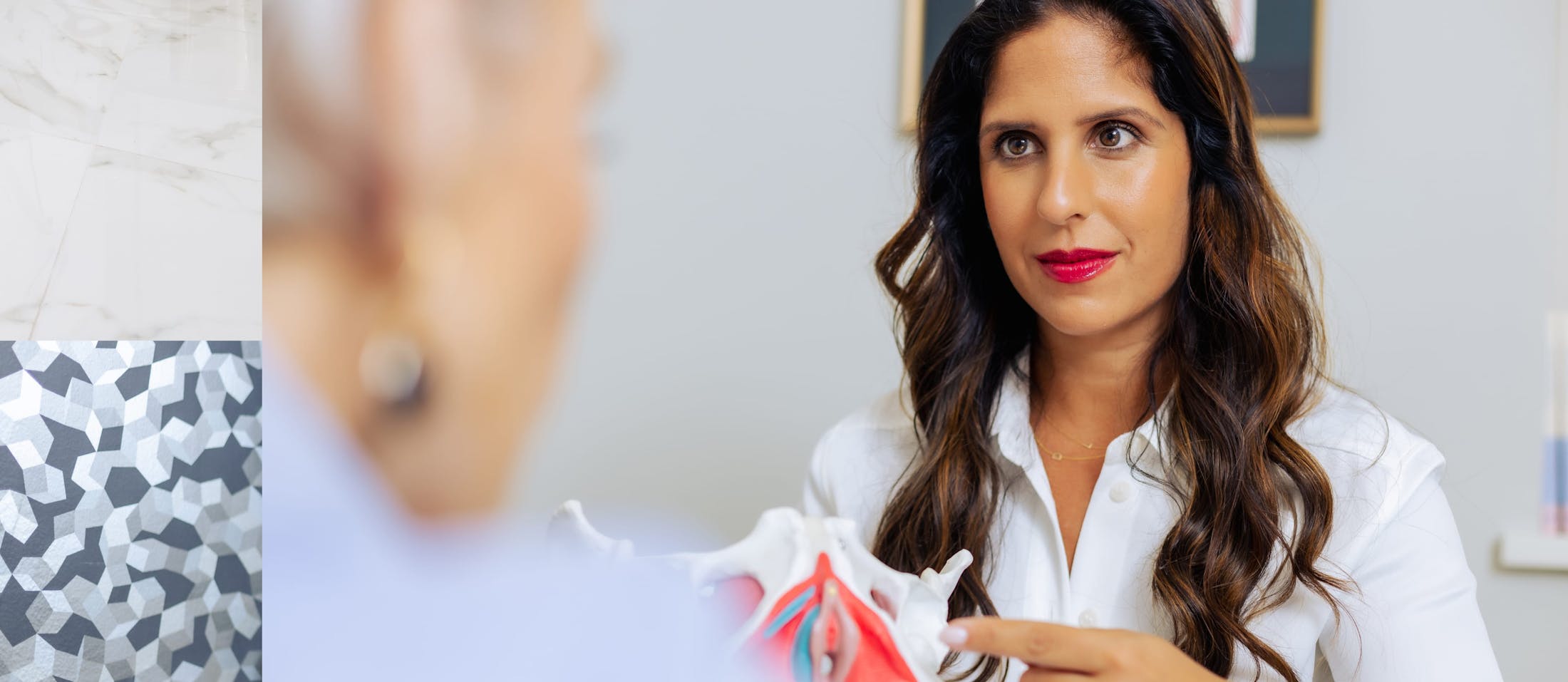
At Pelvic Pain Doc, we’re the first to say that sex should never be painful. However, as pelvic pain specialists in New York, we are all too aware that sex can be excruciating for some patients, if not flat out impossible. A number of pelvic pain conditions can cause painful sex, but vulvodynia is one of the most misunderstood of all. Characterized by unexplained pain and swelling around the opening of the vagina, vulvodynia can make it feel like you’ll never be able to have sexual intercourse again. But we’re here to tell you that you can — and you will!
So, if you’ve been wondering if a healthy sex life is possible with vulvodynia, you’ve come to the right place. Dr. Sonia Bahlani has dedicated her life to helping patients like you overcome their pain and get back to having amazing, pain free sex. So keep reading. In this post, we’ll share:
- An overview of vulvodynia
- The difference between vulvodynia and vestibulodynia
- Vulvodynia symptoms and causes
- How to reduce pain with sex with vulvodynia
- Getting a vulvodynia diagnosis
- How to treat vulvodynia
What is Vulvodynia?
Vulvodynia, also known as vestibulodynia, is a pelvic pain condition that causes chronic pain around the opening of the vagina, with no identifiable cause and lasting for at least three months. Living with this condition can be so uncomfortable that it becomes impossible to sit for long periods of time or even think about having sex. Some people may even find it impossible to use tampons.
While the physical symptoms of vulvodynia are debilitating on their own, the psychosocial impacts can be just as serious. People who have this condition may experience feelings of depression, relationship difficulties, stress and anxiety. That’s because vulvodynia can interfere with daily life and normal activities, from simply sitting at a desk or driving a car to sexual activity.
Vulvodynia vs. Vestibulodynia: What’s the Difference?
While the terms vulvodynia and vestibulodynia are often used interchangeably, there are some notable differences between the two conditions. Vestibulodynia is actually a subset of vulvodynia: while vulvodynia is a general, near-constant pain in the vulvar area, vestibulodynia is characterized by localized pain specifically in the vestibule, or the vaginal opening. As the most common type of vulvodynia, vestibulodynia pain is brought on by pressure on or penetration of the vulva, whether from sexual intercourse, tampons or a pelvic exam.
Like vulvodynia, the cause of vestibulodynia is unknown. However, experts believe that people with the condition may have more pudendal nerves in the vulvar region. These nerves are responsible for pain and pleasure sensations in the pelvic area. For some people, the pudendal nerves can be hypersensitive to touch, resulting in neuroproliferation (or neuroproliferative vestibulodynia. This can be congenital, meaning that the patient was born with the condition, or acquired as a result of injury or irritation.
Vulvodynia: Symptoms and Causes
So how do you know if you have vulvodynia? The only way to know for sure is to visit a pelvic pain specialist to narrow down the underlying cause of your pain. Along with chronic pain in the vagina, you may also experience the following symptoms:
Burning sensation in or around the vaginaSwelling of the vulvaExtreme pain during intercourseFeeling raw in or around the vaginaIntense itchingThrobbing of the vulvar area
Unfortunately, given the nature of vulvodynia or vestibulodynia, it can often be difficult to diagnose. Many patients suffer for years and are often told their pain is all in their heads. This fact, along with the intense discomfort vulvodynia causes, can make life with this condition extremely stressful and upsetting. While the exact cause is often multifactorial, vulvodynia can be associated with:
Past vaginal infectionsInjury or trauma to the vulvar areaHormonal changesAllergies or sensitive skinDisorders in the pelvic floorNeuroproliferative changes

Diagnosing Vulvodynia or Vestibulodynia
Diagnosing vulvodynia poses an ongoing challenge. Identifying the symptoms is not enough for a diagnosis but it’s a great place to start. By discussing your symptoms with a pelvic pain specialist, you can rule out other potential conditions that could be causing your pelvic pain.
In order to understand the reason for vulvodynia, your pelvic pain specialist will start by going through your medical history with you and diving into the details of your pain, mainly where it hurts and the severity of your symptoms. Then, if you feel comfortable, Dr. Bahlani will do a physical exam to evaluate the location and intensity of your pain. She will always be as gentle as possible, using just a cotton swab to touch the areas around the vulva, to avoid aggravating your symptoms. If necessary, she may also complete a pelvic exam to evaluate your pelvic floor muscles and take a swab to rule out infection.
From there, Dr. Bahlani can start to put together a holistic treatment plan. You’ll work together to address your symptoms, overcome your pain and help you find relief.
Vulvodynia and Sex: What to Do
For many vulvodynia patients, even the slightest touch can trigger intense and unbearable pain. It’s only natural to avoid sexual interaction of any kind, but no one should have to live this way. Sex isn’t just an important part of relationships with romantic partners, it’s also a way to express ourselves and empower our self esteem. Fortunately, there are some things you can do at home to begin to enjoy sex with vulvodynia.
First, it’s important to have an open, honest discussion with your sexual partner. The better they understand what’s going on in your body, the better they’ll be able to adapt to what you need to feel comfortable with sex. Show them what feels good and what hurts. If you are trying to have penetrative sex, leave plenty of time for foreplay so your body has time to warm up and use plenty of lubricant.
Most importantly, listen to your body (and make sure your partner is listening to you, too). If you experience pain, vaginal muscle spasms or any other discomfort, you may not be ready for penetrative sex just yet. In the meantime, there are other ways to be intimate and feel close to your partner without sexual intercourse. Kissing, massage and oral sex are all gentle ways to be intimate that won’t cause pain.
If you’re having difficulty with sex, try not to be discouraged. Overcoming vaginismus takes time. By working together with your partner and a pelvic pain specialist, you can (and will) have healthy, enjoyable sex again.
Treatment Options for Vulvodynia
Vulvodynia can cause more than just physical pain — it can lead to emotional distress, strain on relationships, feelings of isolation and depression. When treating vulvodynia, it’s just as important to treat the emotional trauma as it is to treat the physical discomfort. While no single treatment is effective for every person, a combination of therapies can lead to a life without pain. This may include:
- Topical medications/creams (get started with Dr. Bahlani to discuss what may be right for you)
- Oral medications
- Biofeedback therapy to train your pelvic floor muscles to relax
- Pelvic floor physical therapyInjections
- Botox
- Surgical interventions like vestibulectomy (only if non-invasive options have been ineffective)
If you’re suffering from vulvodynia or vestibulodynia and it is affecting your quality of life, there is no reason to continue living in pain. That’s why Pelvic Pain Doc exists: to help people like you reclaim power over their pain, their sexuality and their lives. Contact us today.

